14 Best Exercises to Improve Posterior Deltoid Strength
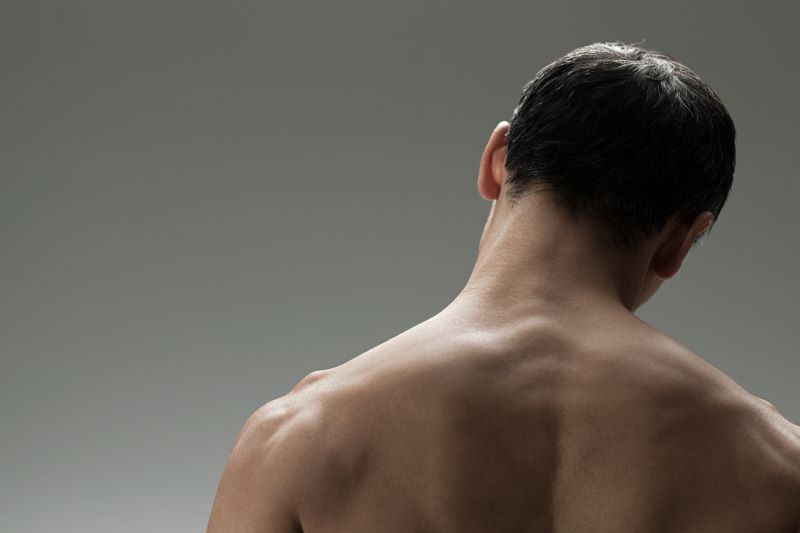
Strong shoulders do not just prevent injuries but have many real-life benefits as well. You can lift a heavy suitcase and pass food across the table as quickly as you throw a baseball. Moreover, good shoulder training boosts self-confidence.
Though each muscle works together to help the shoulders in everyday functions like carrying heavy suitcases, developing posterior deltoid strength might take work. The exercises for posterior deltoids mentioned here will help you develop shoulder strength. Read on.

Table of Contents

What is Posterior Deltoid Strength?
Posterior deltoid strength refers to the muscular power and endurance in the rear part of the shoulder, specifically the deltoid muscle. This muscle is crucial for pulling or lifting from behind and stabilising the shoulder joint. Strengthening the posterior deltoid helps enhance overall shoulder functionality, improve posture, and prevent injuries.
It supports various upper body movements and contributes to a balanced shoulder appearance. Exercises targeting this muscle can improve performance in sports and daily activities.
How to Maintain Posterior Deltoid Strength?
Maintaining posterior deltoid strength involves consistent exercise, proper technique, and adequate recovery.
Perform targeted exercises like reverse flies and bent-over rows regularly.
Incorporate a variety of different workouts to engage the muscles differently.
Ensure proper form to avoid injury and maximise effectiveness.
Include stretching routines to maintain proper flexibility and to prevent stiffness.
Follow a balanced diet that is rich in protein to support muscle maintenance.
Allow yourself sufficient rest between workouts to promote muscle recovery and growth.
14 Best Exercises for Posterior Deltoid Strength
Given below are the details of 14 exercises for the posterior deltoid that will help you strengthen your shoulders:
Isolation Exercises
Isolation exercises target the posterior deltoid muscles, ensuring focused development and strength gains. Incorporating isolation exercises into your routine can enhance overall shoulder strength and stability.
1. Dumbbell Reverse Fly
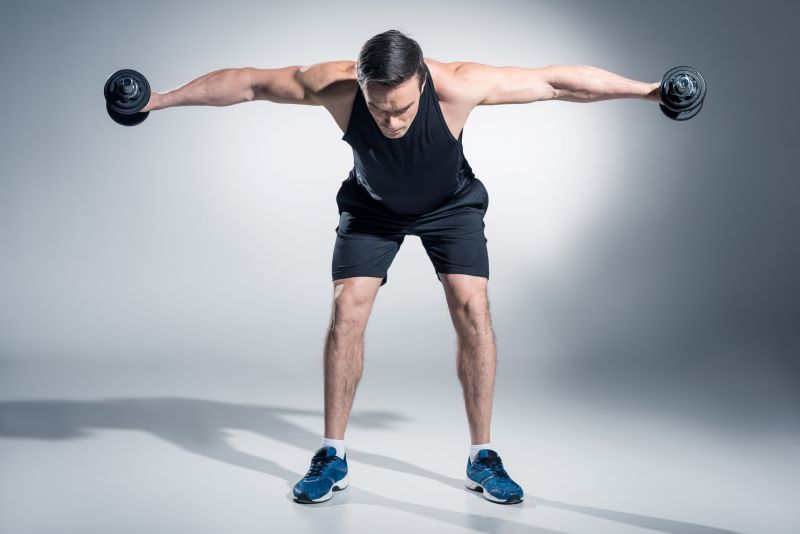
You can easily do this exercise at home. You can also do it in the gym. This exercise helps in strengthening the posterior deltoids and important upper back muscles. These, in turn, improve balance, poor posture and upright stance.
Muscles Involved: Rhomboid muscles in the shoulders and upper back region
How to Do the Exercise:
Given below are the steps to do Dumbbell Reverse Fly:
Step 1: Hold dumbbells in each hand and stand with the feet at shoulder-width apart position.
Step 2: Push the hips back. Bring your chest forward in a hinge movement. Ensure that your torso is parallel to the floor. Hang your arms straight down with palms facing each other.
Step 3: Bend your elbows slightly and raise your arms gradually to the sides until they reach shoulder level. At the end of this particular movement, squeeze your shoulder blades together.
Step 4: Gradually return to the starting position and repeat the exercise.
2. Rear Deltoid Machine
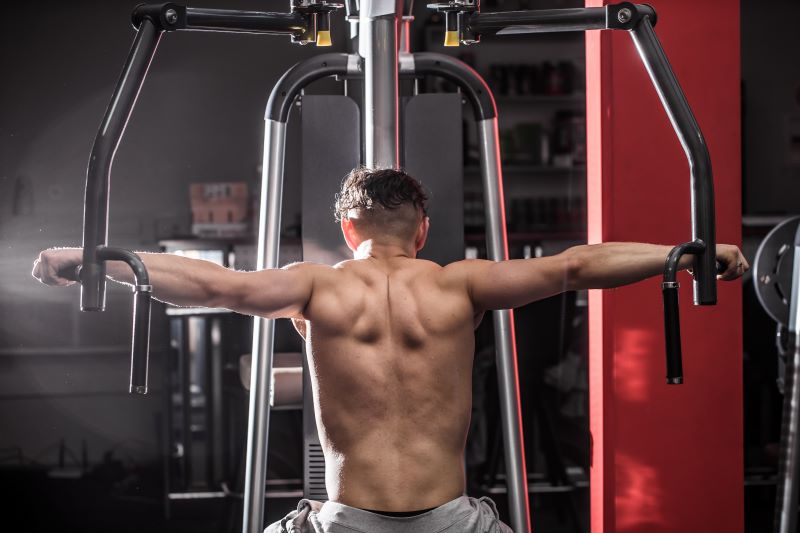
This machine helps you exercise and strengthen your posterior deltoid muscles. It ensures targeted muscle engagement for optimal results.
Muscles Involved: Middle Trapezius, Rhomboids, Posterior Deltoids
How to Do the Exercise:
The steps to exercise with this equipment are detailed below:
Step 1: First, face the pad and sit on the machine. Arrange the height of the seat in such a way that the handles are at the same level as the shoulders.
Step 2: Grip the handles and press the arms back. Ensure that your arms are straight/very slightly bent.
Step 3: Squeeze the shoulder blades together and hold the position for a few seconds.
Step 4: Gradually return to the starting position and repeat the exercise.
3. Standing Bent Over Lateral Raise
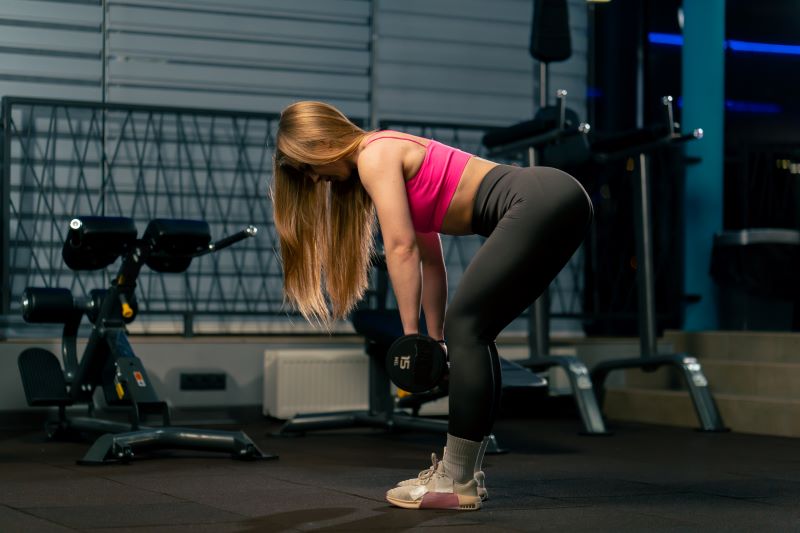
This exercise improves the strength of the posterior deltoids. Additionally, it improves posture and shoulder stabilisation. It helps in increasing energy levels and improves overall health.
Muscles Involved: Posterior Deltoids, Rhomboids, Middle Deltoids, Middle Trapezius
How to Do the Exercise:
The steps to do this exercise are as follows:
Step 1: Hold the dumbbells and ensure your palms face each other.
Step 2: Stand with your feet shoulder-width apart. Bend your knees slightly. With a straight back, bend forward.
Step 3: Raise your arms. It should look like you’re spreading your hands like wings. Make sure that your hands are parallel to the floor.
Step 4: Squeeze the shoulder blades at the end of this particular movement.
Step 5: Gradually return to the starting position. Ensure the weights are light enough to do a minimum of 10-12 repetitions.
4. Side-Lying External Rotation
This exercise ensures that your shoulders gain dynamic stability. It also helps improve overall shoulder strength and mobility.
Muscles Involved: Rotator Cuff, Rhomboids, Middle Trapezius, Rear Deltoid
How to Do the Exercise:
Below are the steps that you need to follow:
Step 1: Hold a light dumbbell and lie on your side.
Step 2: Place your upper arm on the side with the elbows at right angles. If you have broad shoulders, use a towel roll between your torso and upper arm.
Step 3: Rotate your arm on your torso as far as possible. Don’t drift off your upper arm away from the body.
Step 4: After holding for a few seconds, gradually return to the starting position. Repeat the exercise.
5. Cable Face Pull
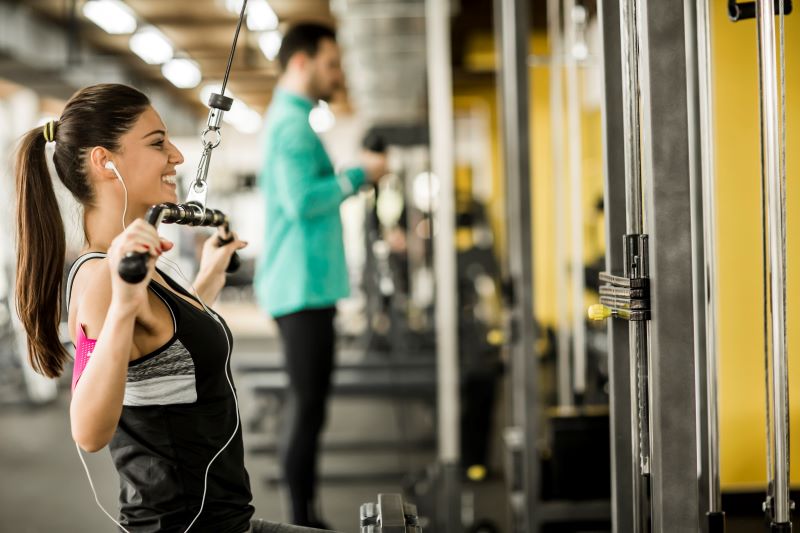
This exercise is excellent for targeting and strengthening the posterior deltoid muscles. It also improves shoulder stability and enhances posture by engaging the upper back muscles.
Muscles Involved: Posterior Deltoids, Rhomboids, Middle Trapezius, Rotator Cuff Muscles
How to Do the Exercise:
Below are the steps to do this exercise:
Step 1: Set the pulley on a cable machine to a high position and attach a rope handle.
Step 2: Hold the rope with an overhand grip, positioning your feet shoulder-width apart. Step back slightly to create tension on the cable.
Step 3: Pull the rope towards your face, leading with your elbows. Keep your upper arms parallel to the floor. At the end of the movement, squeeze your shoulder blades together.
Step 4: Gradually return to the starting position and repeat the exercise.
Step 5: Ensure your torso remains upright and stable throughout the movement. Avoid using your lower back to assist in the pull.
Step 6: Perform 10-15 repetitions per set, focusing on controlled movements and maintaining proper form.
Compound Exercises
Compound exercises simultaneously engage multiple muscle groups, including the posterior deltoids, to build upper body strength. Incorporating these exercises into your workout can improve muscle synergy and balanced strength development.
6. Single-Arm Bent Over Row
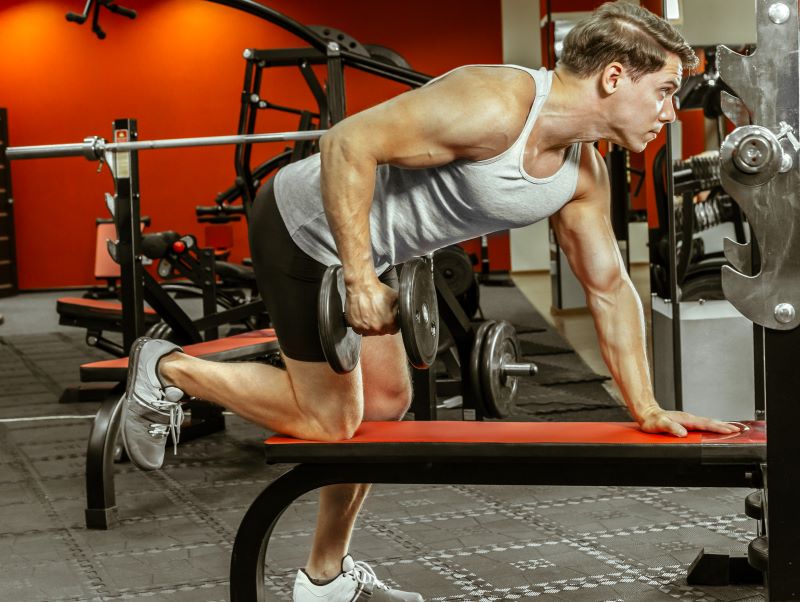
This is a multi-joint exercise that helps in strengthening the rear deltoids. If you do this particular exercise regularly, you can carry out daily activities with less discomfort and more ease.
Muscles Involved: Biceps, Back, Posterior Deltoids and Transverse Abdominals
How to Do the Exercise:
Given below are the steps to do a single-arm bent-over row:
Step 1: Position your left knee and left hand on a bench. Make sure that your left elbow is straight.
Step 2: Slightly stretch your right leg behind you. Use the floor for support. Make sure that your back is flat and your spine is neutral.
Step 3: Hold the dumbbell in your hand. Its weight should range from medium to heavy. With your arm, reach down towards the floor.
Step 4: Slightly bend the right elbow. Pull it up and back, ensuring that the upper arm is in line with the lower portion of the chest.
Step 5: Squeeze the shoulder blades together and gradually lower the weight.
Step 6: Go for 10-12 repetitions on one side before switching your side.
7. Dumbbell Bent-Over-Row
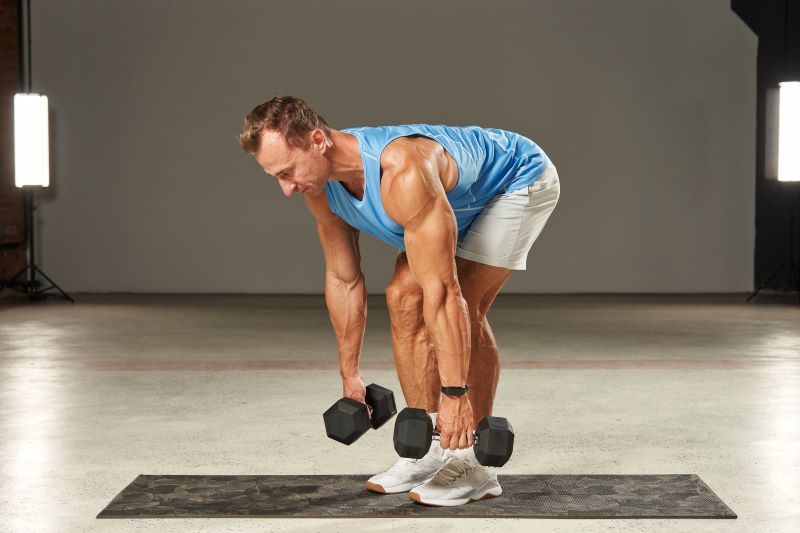
This exercise helps you strengthen your spine’s stability. It is a moderate-intensity exercise and helps you burn a lot of calories.
Muscles Involved: Trapezius, Latissimus Dorsi, Infraspinatus, Teres Major, Teres Minor, Rhomboids, Brachialis and Pectoralis Major
How to Do the Exercise:
Below are the steps to do this exercise:
Step 1: Hold dumbbells in your hand and stand with your feet positioned at hip-width apart.
Step 2: Push the hips back and move forward in a hinge movement till your torso is parallel with the floor. Ensure that your core is engaged. Hang your arms straight and ensure that the palms are facing one another.
Step 3: Make sure that your back is flat. Squeeze your shoulder blades and pull up the weights to your side.
Step 4: Gradually return to the starting position and repeat.
8. T-Bar Row
This exercise is excellent for building upper back strength and stability, engaging multiple muscles, and enhancing overall shoulder and upper back function.
Muscles Involved: Trapezius, Latissimus Dorsi, Rhomboids, Posterior Deltoids, Erector Spinae, Biceps
How to Do the Exercise:
Below are the steps to do this exercise:
Step 1: Load the T-bar with appropriate weight and stand over it with your feet shoulder-width apart.
Step 2: Bend your knees slightly and hinge at the hips, keeping your back straight and chest up.
Step 3: Grasp the handles of the T-Bar with both hands and let your arms hang straight down.
Step 4: Pull the bar towards your torso, squeezing your shoulder blades together at the movement's top.
Step 5: Slowly lower the bar back to the starting position and repeat.
9. Seated Row
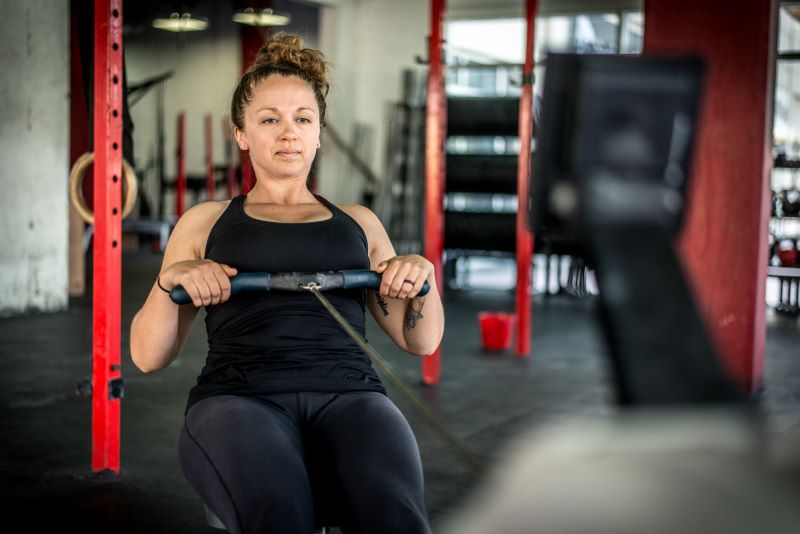
This exercise targets the upper back and shoulders, promoting balanced muscle development and improved posture.
Muscles Involved: Trapezius, Latissimus Dorsi, Rhomboids, Posterior Deltoids, Biceps
How to Do the Exercise:
Below are the steps to do this exercise:
Step 1: Sit on the rowing machine with your feet securely on the footrests.
Step 2: Grab the handles with an overhand grip, keeping your back straight and your core engaged.
Step 3: Pull the handles towards your torso, squeezing your shoulder blades together as you do so.
Step 4: Hold the position momentarily, then slowly return to the starting position, allowing your arms to extend fully.
Step 5: Repeat the exercise for the desired number of repetitions.
10. Barbell Rear Delt Row
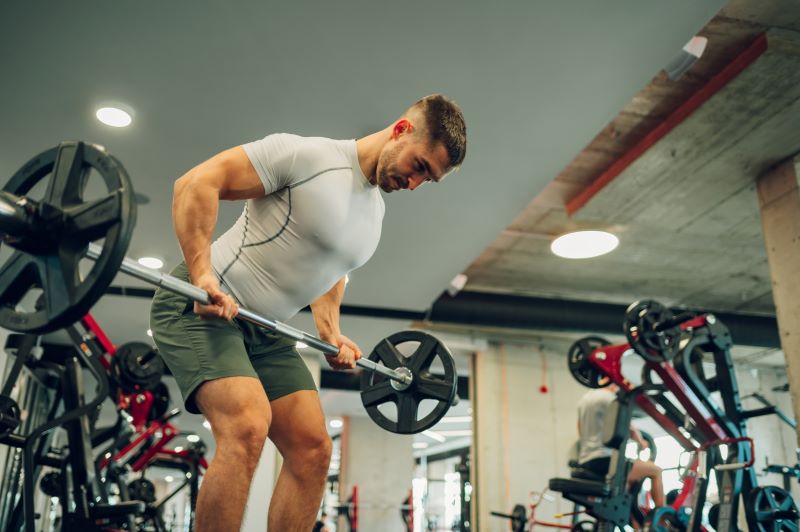
This exercise effectively targets the posterior deltoids and upper back, contributing to shoulder stability and strength.
Muscles Involved: Posterior Deltoids, Rhomboids, Trapezius, Latissimus Dorsi, Biceps
How to Do the Exercise:
Below are the steps to do this exercise:
Step 1: Hold a barbell with an overhand grip, hands slightly wider than the shoulder, and stand with your feet hip-width apart.
Step 2: Bend your knees slightly and hinge at the hips, keeping your back straight and chest up.
Step 3: Let the barbell hang straight down from your shoulders.
Step 4: Pull the barbell towards your upper abdomen, squeezing your shoulder blades together at the top.
Step 5: Slowly lower the barbell back to the starting position and repeat.
Assisted Bodyweight Exercises
Assisted bodyweight exercises use your body weight, often with added support, to target the posterior deltoids and other upper body muscles. Incorporating assisted bodyweight exercises can improve overall muscle endurance and body mechanics.
11. Assisted Pullup
This exercise helps in building strength and improves body positioning and movement. It also enhances stability and perfects body shape.
Muscles Involved: Biceps, Middle and Lower Trapezius, Deltoids and Latissimus Dorsi
How to Do the Exercise:
Below are the steps for this particular exercise:
Step 1: First, you must adjust the weight deduction on the machine’s side. Make sure that you choose the correct set and weight.
Step 2: Get onto the knee pad and push it down until you can position both your knees. The hips should be positioned hip-width apart.
Step 3: Stretch your hands up to hold the outer handles above. Make sure that your arms are placed away from the centre.
Step 4: Widen your arms and return to the starting position.
Step 5: Pull yourself up until your chin is at the same level or above the handles.
Step 6: Hold the position for some time before lowering your body with control. Make sure that your shoulder blades remain engaged. Repeat the exercise.
12. Inverted Row
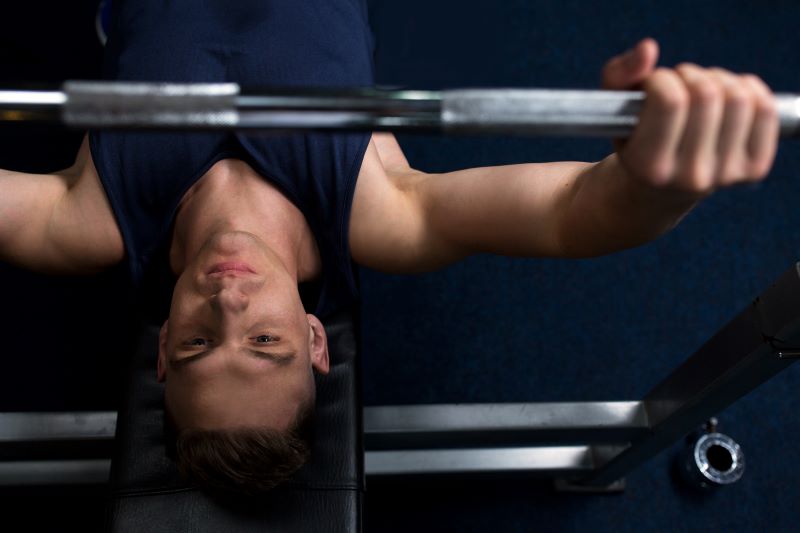
This exercise targets the posterior deltoid and improves upper body strength and posture. It is an effective bodyweight exercise that enhances muscular endurance and stability.
Muscles Involved: Posterior Deltoids, Rhomboids, Middle Trapezius, Biceps, Latissimus Dorsi
How to Do the Exercise:
Below are the steps to do this exercise:
Step 1: Set a barbell in a rack at waist height. Lie under the bar and grab it with an overhand grip, hands shoulder-width apart.
Step 2: Keep your body straight and your feet flat on the floor. Your body should be in a straight line from head to heels.
Step 3: Pull your chest towards the bar, squeezing your shoulder blades together at the movement's top.
Step 4: Gradually lower yourself back to the starting position and repeat the exercise.
13. Assisted Dips

This exercise helps build upper body strength, focusing on the posterior deltoids, triceps, and chest. It aids in enhancing shoulder stability and functional strength.
Muscles Involved: Posterior Deltoids, Triceps, Pectoralis Major, Rhomboids, Lower Trapezius
How to Do the Exercise:
Below are the steps to do this exercise:
Step 1: Adjust the dip machine's weight assistance to a suitable level. Stand on the platform and grip the handles.
Step 2: Position your knees on the knee pad and keep your body upright.
Step 3: Lower your body by bending your elbows to about 90 degrees, ensuring your shoulder blades are engaged.
Step 4: Push yourself back up to the starting position, fully extend your arms, and repeat.
14. TRX Reverse Fly
This exercise is excellent for targeting the posterior deltoid and upper back muscles. It improves shoulder stability, posture, and overall upper body strength.
Muscles Involved: Posterior Deltoids, Rhomboids, Middle Trapezius, Infraspinatus
How to Do the Exercise:
Below are the steps to do this exercise:
Step 1: Adjust the TRX straps to mid-length. Stand facing the anchor point and hold the handles with an overhand grip.
Step 2: Lean back slightly with your arms extended in front of you, keeping your body straight.
Step 3: Pull the handles apart and bring your arms out to the sides, squeezing your shoulder blades together.
Step 4: Gradually return to the starting position with control and repeat the exercise.
Types of Equipment Required for Posterior Deltoid Strength Exercises
Equipment is needed for some Posterior Deltoid Strength exercises to improve both safety and effectiveness. This table provides a comprehensive workout routine by listing exercises that call for equipment.
Exercise |
Required Equipment |
| Dumbbell Reverse Fly | Dumbbells |
| Rear Deltoid Machine | Rear Deltoid Machine |
| Standing Bent Over Lateral Raise | Light to Medium Weight Dumbbells |
| Side-Lying External Rotation | Dumbbell, Towel |
| Cable Face Pull | Cable Machine |
| Single-Arm Bent Over Row | Dumbbell, Bench |
| Dumbbell Bent Over Row | Dumbbells |
| T-Bar Row | T-Bar Row Machine or Barbell with T-Bar Attachment |
| Seated Row | Seated Row Machine |
| Barbell Rear Delt Row | Barbell |
| Assisted Pullup | Assisted Pull-up Machine |
| Inverted Row | Barbell or Smith Machine |
| Assisted Dips | Assisted Dip Machine |
| TRX Reverse Fly | TRX Straps |
Benefits of Exercise for Posterior Deltoid Strength
Exercising the posterior deltoids is crucial for enhancing shoulder stability, improving posture, and preventing injuries. It also contributes to overall upper body strength and functional movement capabilities.
- Improved Shoulder Stability: Strengthening the posterior deltoids enhances the stability of the shoulder joint, reducing the risk of dislocations and other injuries.
- Better Posture: Regular exercise helps correct imbalances, promoting a more upright and balanced posture.
- Injury Prevention: A posterior solid deltoid muscle can prevent common shoulder injuries by providing better support during various movements.
- Enhanced Athletic Performance: Strengthening these muscles improves performance in sports and physical activities that require upper body strength and coordination.
- Increased Upper Body Strength: Targeted exercises contribute to upper body strength, benefiting activities like lifting, pulling, and pushing.
- Functional Movement Support: Strong posterior deltoids aid in everyday tasks and functional movements, making daily activities more accessible and efficient.
Who Should Avoid Posterior Deltoid Strength Exercises?
People should avoid posterior deltoid workouts in the following situations:
If they are suffering from shoulder injuries or any type of body pain.
If they have a fever or feel sick.
A person shouldn’t do these exercises if their doctor has advised against it.
If someone has fractured their arm bones, he/she should skip posterior deltoid exercises.
One should avoid workouts if they are suffering from sore muscles.
A person can skip posterior deltoid exercises if they are sleep-deprived.
What are the Safety Precautions to Take?
Given below are details of the precautions that you need to take while doing deltoid strength exercises:
If you are uncomfortable doing a particular exercise, don’t proceed.
Make sure you do the exercise slowly. There’s no need to rush.
You need to use proper equipment. Wear the right kind of loose–fitting clothes and comfortable shoes.
Make sure you warm up appropriately before exercising.
Ensure that you drink water adequately every 20 minutes while exercising.
To sum up, exercises for the posterior deltoid help strengthen shoulders. This blog provides details of 14 exercises for rear deltoids, including the steps and muscles involved. Additionally, it enumerates the circumstances when people should avoid these exercises. The precautions necessary for exercising have been mentioned for the readers' benefit.













